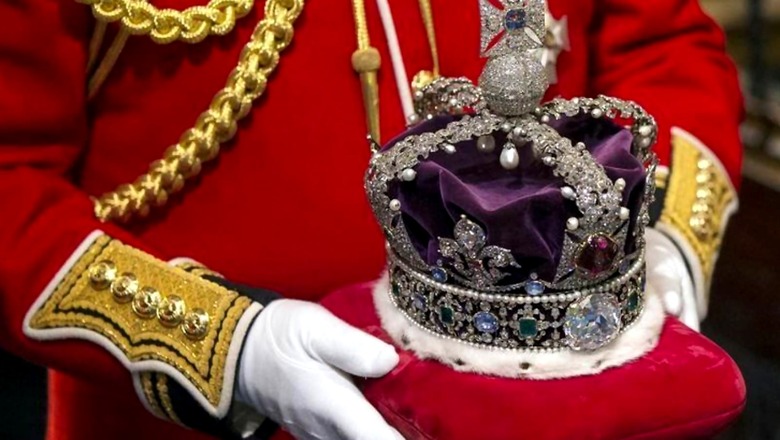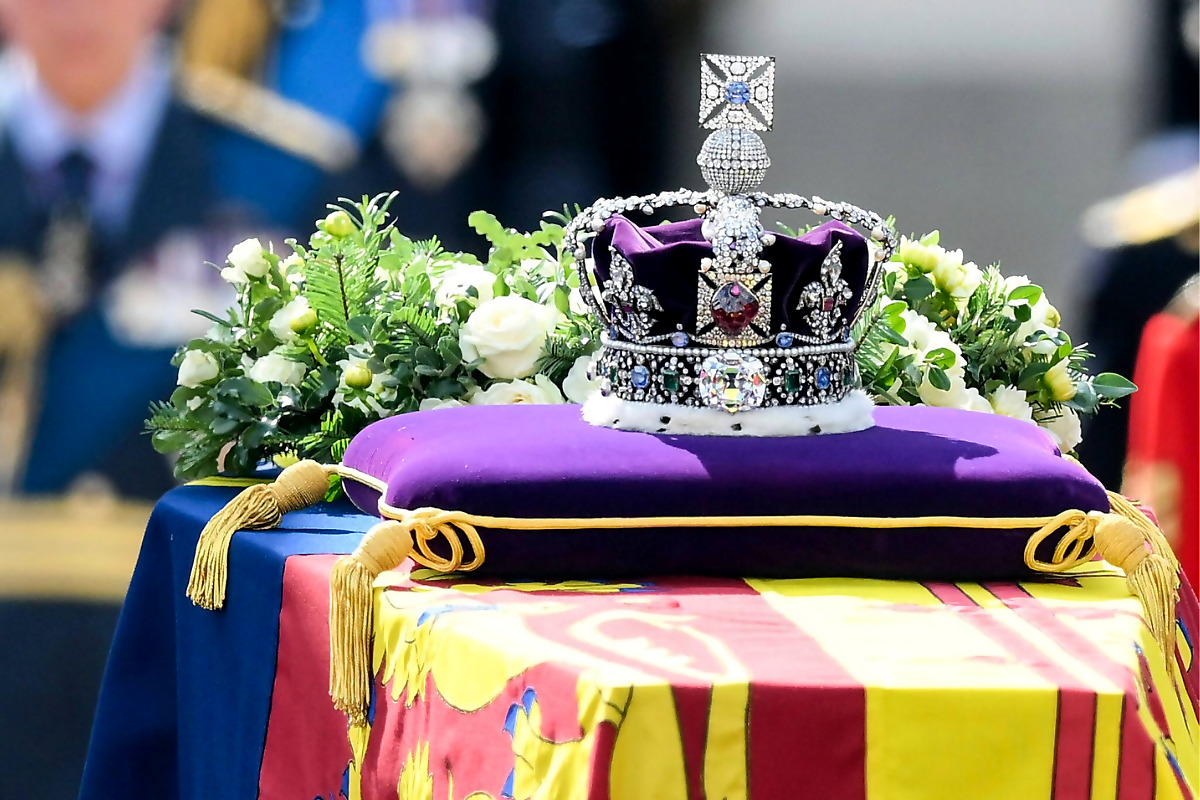
views
With the passing away of Elizabeth II, the queen of the United Kingdom and the Commonwealth Head, it has brought back attention to the most famous diamond in the world — the Kohinoor. While Twitteratis had been saying it should now come back to India, it is her son and successor Charles III’s wife Camilla, who is now the Queen Consort, who will reportedly get her hands on it. But the real question who does Kohinoor really belong to?
The governments of India, Pakistan, Iran, and Afghanistan have been claiming ownership of the Kohinoor. India has demanded its return but the British government insisted that the 105.6-carat oval-shaped diamond was obtained legally by them under the terms of the Last Treaty of Lahore and has rejected all the claims. Here is a look back at the history and the hands the great diamond went into.

Mountain of Light
Meaning the ‘Mountain of Light’, the Kohinoor was originally about 186 carats. While its exact origins are unknown, as per reports it was most likely discovered in South India in the 13th century. It was unearthed from the Golconda mines in central southern India (currently Andhra Pradesh) before it was handed to the British monarchy in 1849. Britain came in possession of the Kohinoor when the East India Company took the jewel from 10-year-old Maharaja Duleep Singh in 1849.
Kohinoor’s connection with India and its history
While the real story of the Kohinoor is still not confirmed, it was said to have been mined during the Kakatiya dynasty at the Kollur Mine, on the south bank of the Krishna River in present-day Andhra Pradesh. It was said to have been fixed as the left eye of the murti of the Hindu goddess Bhadrakali in a temple in Warangal by the Kakatiya dynasty.
Babur, the Turco-Mongol founder of the Mughal empire, wrote about a “famous” diamond that weighed just over 187 old carats, which is approximately the size of Kohinoor originally. According to his diary, it was acquired by Alauddin Khalji, the second ruler of the Turco-Afghan Khalji dynasty of the Delhi Sultanate, when he invaded the kingdoms of southern India at the beginning of the 14th century. He looted it from the Kakatiyas.
Mughals Gifted Kohinoor
Later, it was passed on to Sultanate, and Babur received the diamond in 1526 as a tribute for his conquest of Delhi and Agra at the Battle of Panipat. Years later, his son, Humayun presented the stone to Shah Tahmasp of Persia for giving him shelter, after he was defeated by his Afgan rival, Sher Shah Suri.
The diamond, however, found its way back to the Mughal empire after much war and fight. It then went to the hands of Shah Jahan in the early 17th century. He had embedded the Kohinoor into his Peacock throne that was inaugurated in 1635. It was also alleged that Shah Jahan’s son Aurangzeb was in possession of the Kohinoor for some time.
Decades later, Persian king Nadir Shah, after defeating the lesser Mughal ruler Muhammad Shah at the Battle of Karnal, took the diamond, around Delhi in 1938-39. Nadir Shah’s grandson Shahrokh Shah then presented it to the Afghan empire’s founder Ahmad Shah Durrani in the early 18th century. It remained in his family in Kabul for several years until Durrani’s grandson and Afghan king Shah Shuja aligned with the Britishers, who had by then already entered India.
Britishers enter India
Shuja was overthrown by his predecessor Mahmud Shah in June 1809. He then went into exile in Lahore under the protection of Ranjit Singh. He was India’s first and only Sikh ruler. Shuja presented the Kohinoor to Singh in return for providing him shelter. After Singh’s death in 1849, when the Sikh province of Punjab was annexed by the British, the Kohinoor was taken away and presented to Commissioner Sir John Lawrence, who reportedly carried it in his waistcoat pocket for around six weeks.
His valet later found the diamond and gave it to Lawrence, who later became India’s Viceroy. He, in turn, gave it to Ranjit Singh’s minor heir Dalip Singh, and asked him to present it to Queen Victoria. After presenting it to the queen, it became the prime exhibit at the Great Exhibition in London in 1851. Thereafter, it ended up in the Tower of London as part of the Royal jewels.
Queen Victoria also used to wear it as a brooch. It was later passed on to Queen Alexandra and Queen Mary. During the coronation of George VI in 1937, her wife and the mother of the recently deceased Elizabeth was given the Kohinoor. It featured on her coffin at her funeral in 2002. It was again locked away at the Tower of London. It has, however, been alleged that the Kohinoor brings bad luck to whoever wears it.
To learn about other topics taught in school, explained by News18, here is a list of other Classes With News18: Queries Related to Chapters on Elections | Sex Versus Gender | Cryptocurrencies | Economy & Banks | How to Become President of India | Post Independence Struggle | How India Adopted Its Flag | Formation of States & United India | Tipu Sultan | Indian Teachers Day Different from Rest of the World |Queen Elizabeth & Colonialism |
Read all the Latest Education News and Breaking News here



















Comments
0 comment